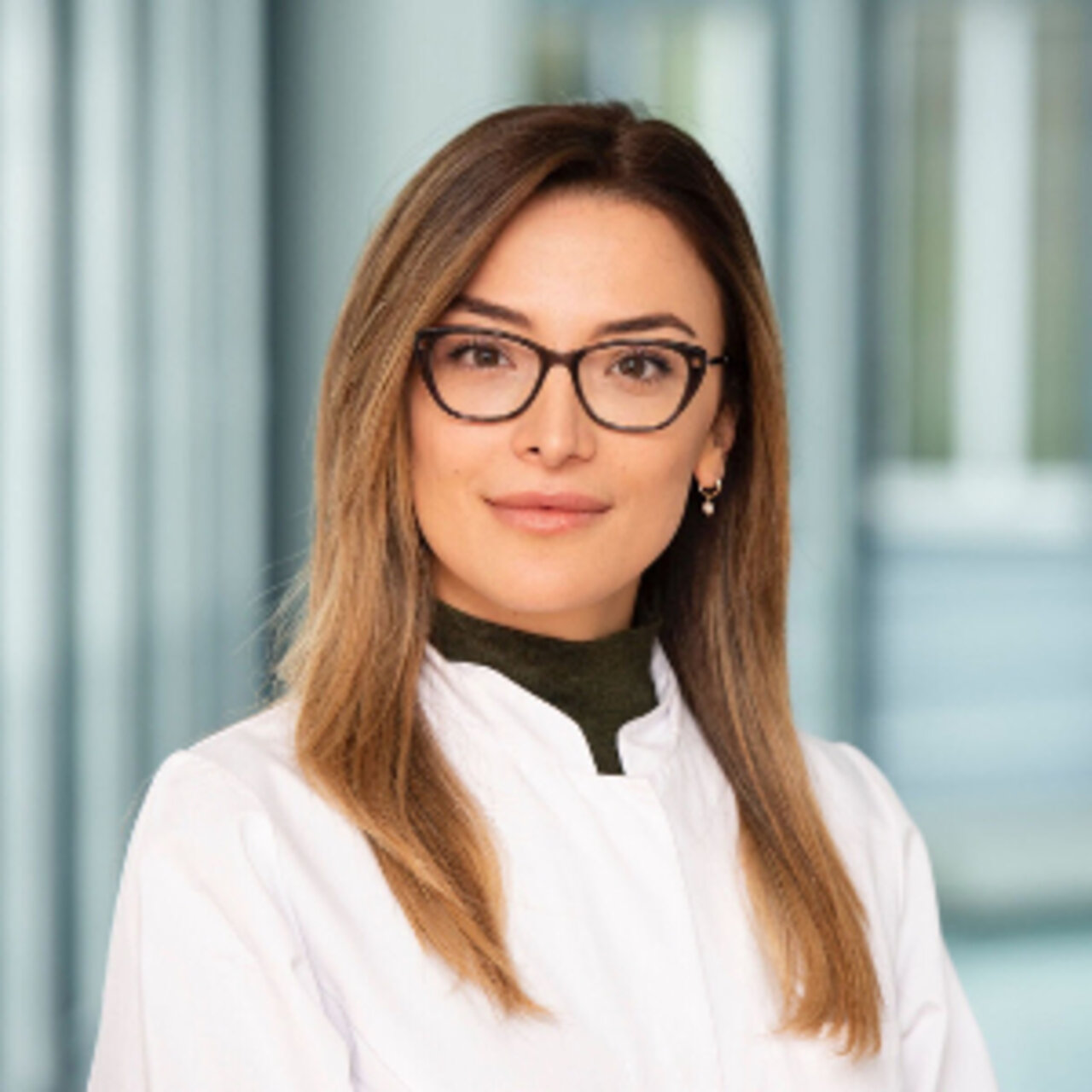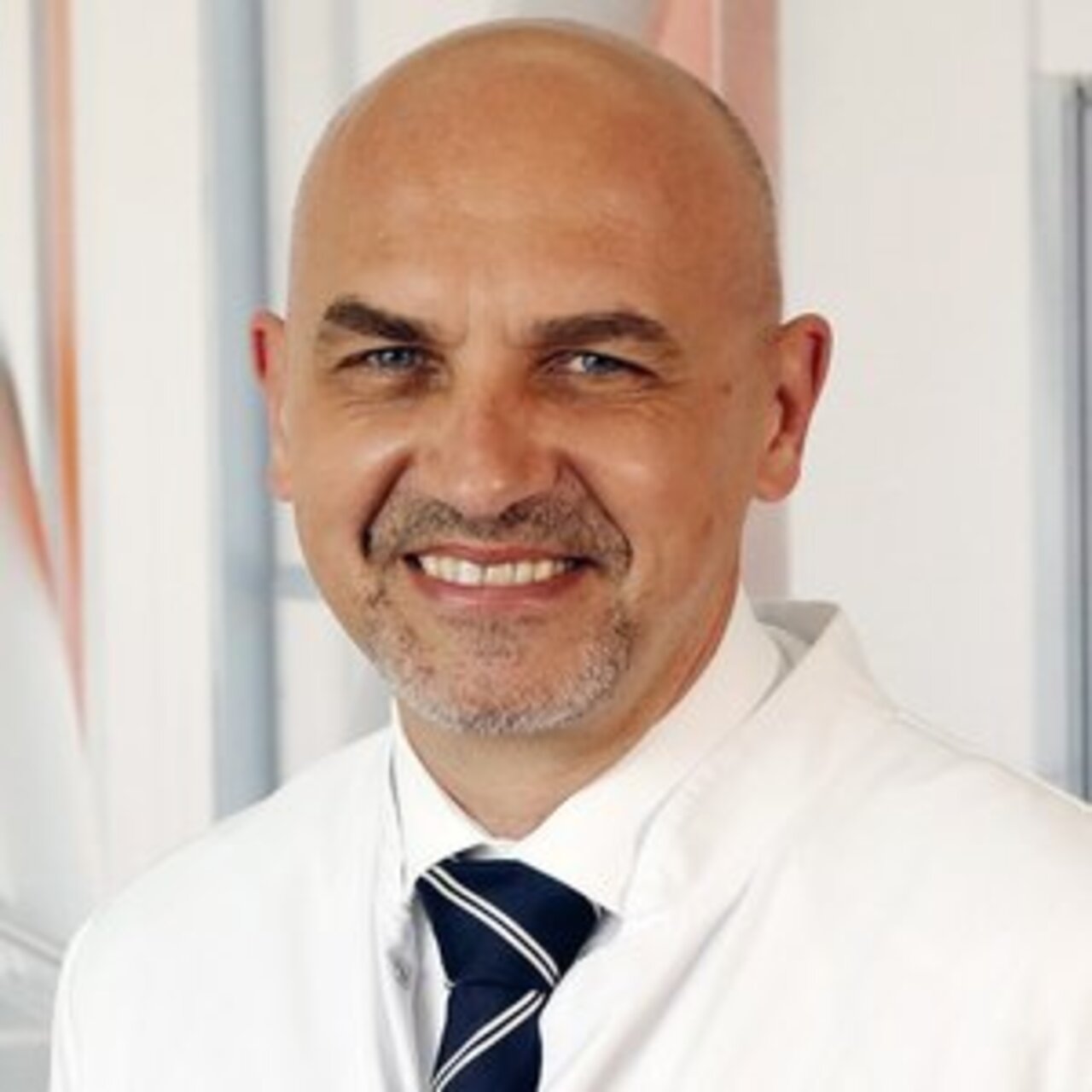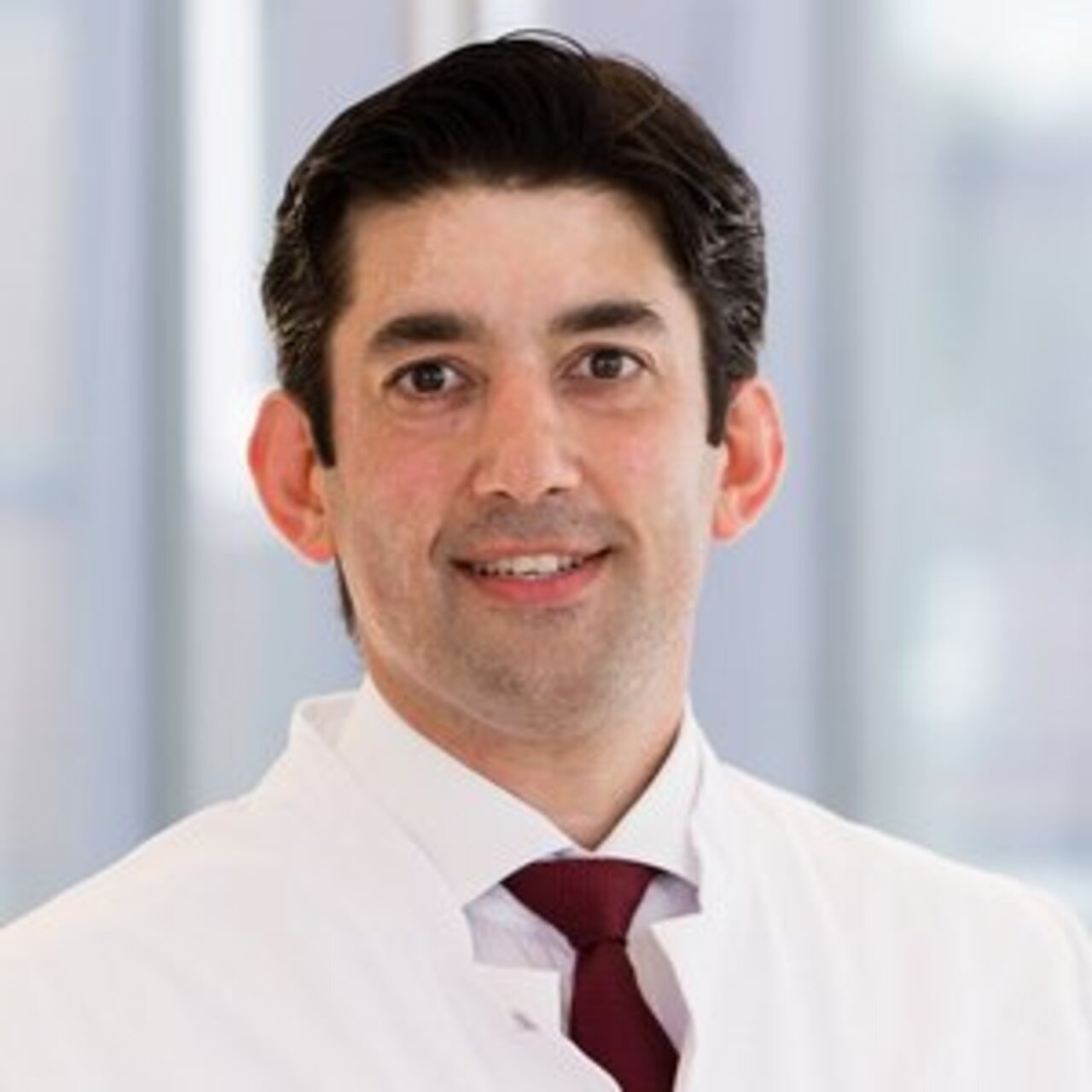Specialists in Carotid Stenosis
10 Specialists found
Dr Brunilda Alushi, PhD, FEACVI
Internal Medicine and Cardiology, Prevention and Imaging Diagnostics
Munich
Information About the Field of Carotid Stenosis
Definition: What Is Carotid Stenosis?
The common carotid artery also called the carotid artery, runs down the right and left sides of the neck and supplies blood to the head. The common carotid artery divides at the so-called carotid bifurcation into the internal carotid artery and external carotid artery.
The external one supplies the face; the internal one supplies the brain with blood. Carotid stenosis is a narrowing (stenosis) of the carotid artery. It can cause symptoms or stay unnoticed. Carotid artery stenosis is associated with an increased risk of stroke.
Causes: How Does Carotid Artery Stenosis Develop?
The most common cause of carotid artery stenosis is arteriosclerosis. Arteriosclerosis is by far the most common form of damage to the blood vessels. It is also known colloquially as the hardening of the arteries. The disease is based on an inflammatory reaction of the vessel wall.
Many factors play a role in the development of arteriosclerosis. Risk factors include high blood pressure, nicotine consumption, diabetes, lack of exercise, and a disorder of lipometabolism. On average, men are affected by atherosclerosis earlier. Overall, it increases with age.
Arteriosclerosis-related narrowing of the carotid artery can reduce blood flow to the brain, where the brain is no longer supplied with sufficient oxygen, and the affected tissue dies – the result is an ischemic stroke.
Symptoms: How Do You Notice Carotid Stenosis?
Most carotid artery stenoses are asymptomatic and discovered at random, for example, during screening examinations. However, carotid stenosis can manifest through sensory or motor function deficits, called transient ischemic attacks (TIA). These attacks result from inadequate blood flow to the brain, causing neurological deficits. These deficits resolve within 24 hours, where 90% of TIAs lasting less than 60 minutes. If they do not, it is called a stroke.
The typical symptoms that can occur are unilateral paralysis of the arm and/or leg, speech disorders, visual disturbances, headaches, and dizziness.
Diagnosis: How Can Carotid Artery Stenosis Be Diagnosed?
The diagnosis is usually made by duplex sonography (ultrasound). It can be used to examine the superficial brain-supplying vessels with a high degree of accuracy. In addition, it is a radiation-free and painless method to examine the carotid artery for its degree of stenosis and its condition. Magnetic resonance imaging (MRI) or computed tomography (CT) is also used for further therapy planning or in case of ambiguity.
Therapy: How Is Carotid Stenosis Treated?
In case of a minor narrowing of the carotid artery, regular ultrasound checks are sufficient. Lifestyle changes can slow further narrowing of the vessel. The progression of arteriosclerosis can be contained by giving up cigarettes, reducing body weight, and adequate exercise.
Drug Treatment
The goal of treating carotid stenosis is to prevent a stroke. The administration of platelet aggregation inhibitors (e.g., acetylsalicylic acid) can prevent blood clots from forming and clogging the vessels. In addition, proper adjustment of blood pressure by antihypertensives and blood lipid levels by lipid-lowering agents counteracts the progression of arteriosclerosis.
Carotid Artery Surgery for Carotid Stenosis
Surgical endarterectomy and endovascular stenting are available to treat carotid stenosis. Carotid endarterectomy is carried out under general anesthesia. First, the surgeon exposes the narrowed carotid artery through a skin incision in the neck. Then, the vessel is opened, and deposits are removed from the artery. A proper connection between the vessels is then restored.
Endovascular stenting, where a balloon catheter is inserted into the affected vessel, may be an alternative to endarterectomy. The vessel is dilated using a balloon, and vascular support (stent) is inserted, allowing blood flow to be restored. Whether and for whom these interventions are recommended depends on numerous factors, such as patient age, degree of stenosis, concomitant diseases, and gender.
Which Doctors and Clinics Are Specialized in Carotid Artery Surgery?
The general practitioner often makes the diagnosis of carotid stenosis during a screening examination. However, other physicians can also make the diagnosis (e.g., internists) during an ultrasound examination. Carotid artery surgery is performed by specialists in vascular surgery.
Since the risk of suffering a stroke due to carotid stenosis increases significantly, experienced specialists should evaluate it. Therefore, many patients are looking for the best clinic in their area.
We will help you find an experienced specialist for carotid artery stenosis surgery. All specialists have been reviewed for their experience and expertise.
Sources:
Duale Reihe, Innere Medizin; Herold, Innere Medizin 2016; Harrison, Innere Medizin










